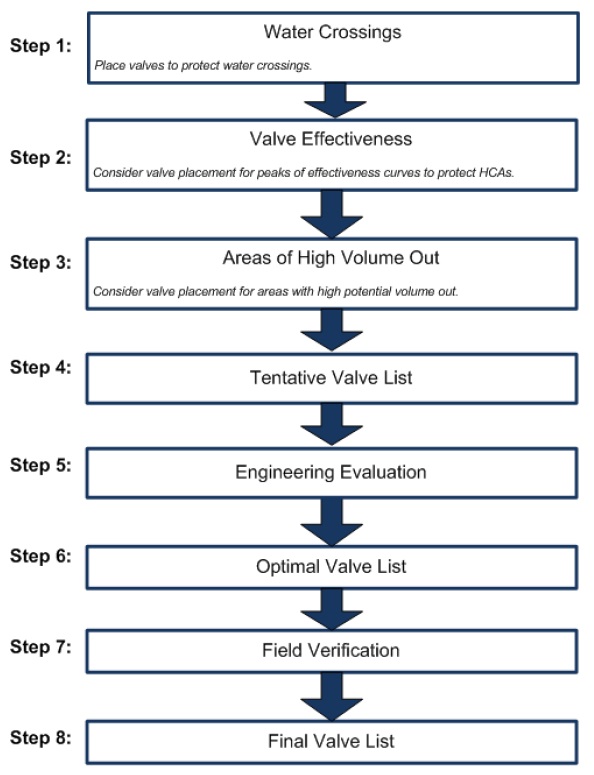Enbridge's Intelligent Valve Placement (IVP): Facts and details
Isolation valves are used to control or halt the flow of crude oil and other liquids – and represent a key piece of safety equipment on a pipeline system.
Enbridge meets or exceeds regulatory requirements by using an Intelligent Valve Placement (IVP) program to determine valve placement across its system.
This IVP program is just one element in Enbridge’s multi-layered approach, including rigorous design and construction standards, integrity management, in-line inspections, leak detection, 24/7 system monitoring, and emergency response, as we relentlessly pursue our Number 1 priority – the safety of the public and the environment, and the operational reliability of our systems.

Click on the image above, or on this link, for a larger version of this flow chart, as well as an explanation of Enbridge's Intelligent Valve Placement (IVP) process.
Enbridge uses the IVP program, which combines rigorous risk assessment and thorough engineering practices, to determine optimal valve locations, since these locations can be influenced by a number of factors – including topography, location of flood plains, and the presence of high-consequence areas (HCAs), such as urban population centres, drinking water resources, environmentally sensitive areas, and commercially navigable waterways. Our IVP program optimizes valve locations along the pipeline, so that one valve can protect multiple water courses and/or HCAs.
Our primary consideration for valve placement is greatly reducing the potential downhill flow of oil to lower elevations, particularly those in close proximity to water crossings and HCAs. Enbridge’s IVP program protects water crossings and HCAs by taking advantage of gravity, using high points of topography to provide natural isolation of product between valves.
Enbridge’s IVP program begins with an extensive study of the pipeline corridor by our Asset Risk Management group to identify those HCAs. We use a sophisticated dispersion modeling software to clearly identify the potential propagation and impact of a release event anywhere along the pipeline – an operation that provides key input into our IVP design.
The first step of Enbridge’s valve placement program is the protection of water crossings. Water bodies greater than 30 metres (100 feet) wide are automatically considered a major water crossing, with a remote-controlled sectionalizing valve installed on each side of the crossing. It’s important to note that Enbridge uses remote-controlled valves, a practice that exceeds regulatory requirements, because the ability to quickly operate the valves is critical to reducing the potential consequences in the rare event of a release.
A bay, lake, river, or stream that is less than 30m wide is considered for valve placement by Enbridge if it has a potential impact on an HCA, or acts as a tributary to a larger water crossing.
Once water crossings and downstream HCAs have been assessed, our IVP program examines any pipeline segment that still has a high calculated potential release volume, and considers it as a candidate for additional valve placement. This process varies from pipeline to pipeline, based on diameter and design flow rate.
Once all valves are initially placed, Enbridge engineers re-evaluate the potential propagation and impact of a release along the entire pipeline corridor. We also conduct field verifications for proposed valve locations, ensuring that the placement of all valves is optimal before design is finalized. Optimal valve placement design is based on factors such as elevation profile, nearest valve location, and overland flow conditions.
Overall, Enbridge’s IVP strategy is designed to ensure the right valves are placed at the right location. Our IVP program is conservative and flexible – identifying and protecting every point along the pipeline where we’ve determine that a release would pose a significant risk to people or the environment.








